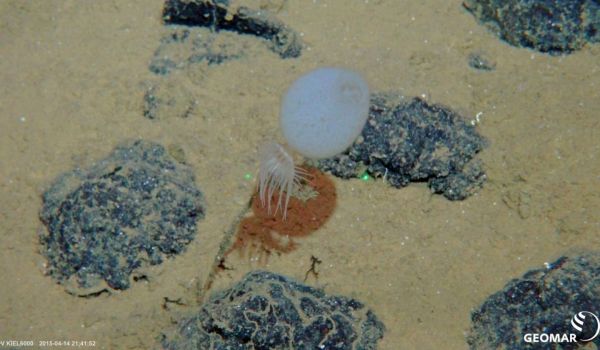By means of hydroacoustic seafloor mapping Senckenberg and GEOMAR researchers have found out that the seafloor in the Atlantic Ocean is much more diverse than previously assumed. Up to now, biologists have assumed mostly monotonous sediment plains in the abyssal deep sea. In their study published today in the scientific journal “PNAS”, the scientists now show that a patchwork of rocky habitats and other hard substrates is to be expected in the Atlantic, which in some regions of this depth zone can make up 30 percent of the seabed. The diversity of habitats is expected to have direct impact on the local wildlife.
The deep sea is known for its unexplored and surprisingly large biodiversity — despite the extreme environmental conditions, it is home to countless organisms that have adapted in many different ways: from Giant Squid and Pelican Eels to blue-green shining Brittle Stars. “This diversity, which we encounter on every expedition, seems to contradict the assumption that the habitat of these animals supposedly is quite uniform,” explains Dr. Torben Riehl from the Senckenberg Research Institute and Nature Museum in Frankfurt, and continues: “We asked ourselves: Why can so many species coexist in such a homogeneous habitat and even evolve in the first place? Is the abyssal sea floor perhaps less monotonous than assumed?”
Continue reading at Senckenberg Research Institute
Image via Senckenberg Research Institute


